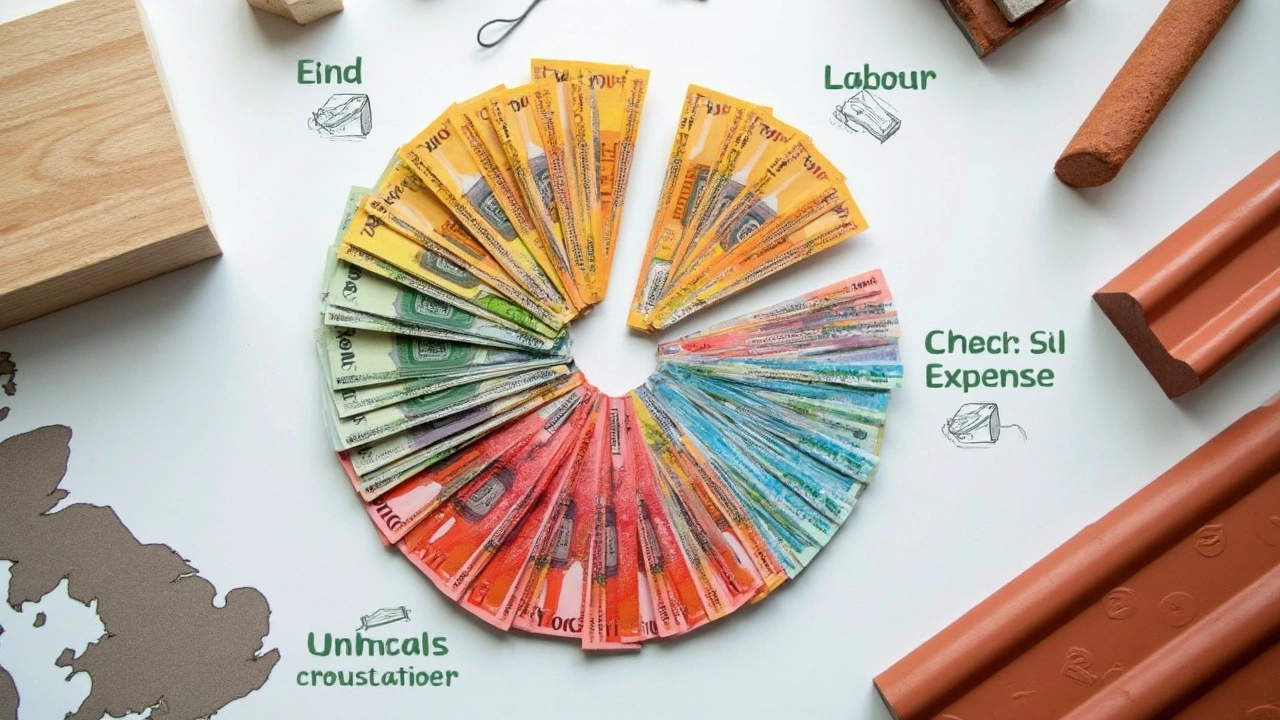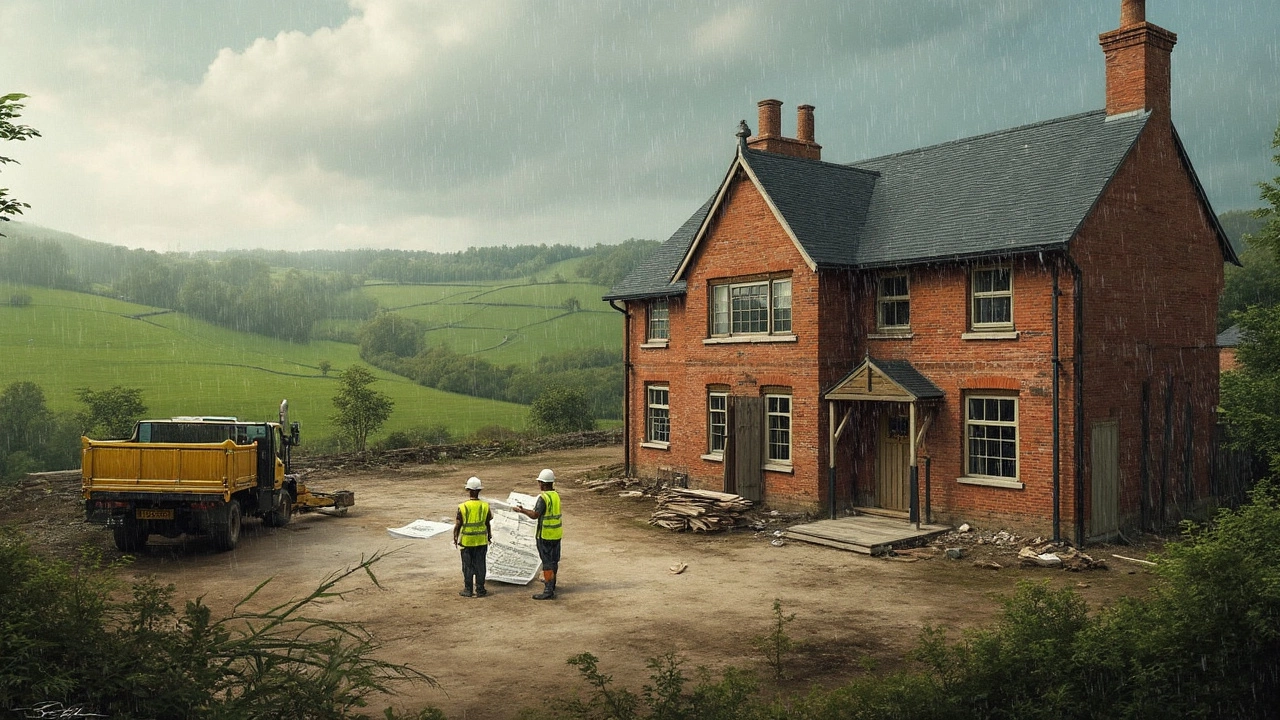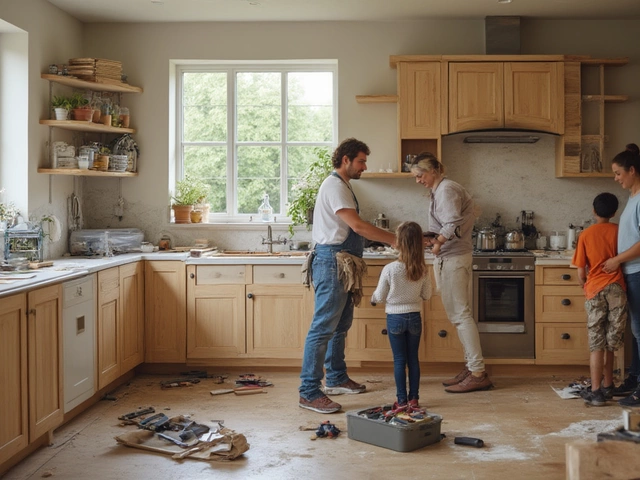Everyone knows building a house is expensive, but a lot of folks get tripped up by costs nobody tells you about up front. You're not just paying for concrete and wood—think permits, surveys, soil tests, hookups for electricity and water, even trash bins for construction mess. These can pile up fast and wipe out your emergency stash before you even get to picking tile.
One survey from 2024 showed that over half of new build homeowners paid at least 10% more than their initial budget because of these surprise add-ons. If you want to be prepared, you need to factor in these extras from day one, not as an afterthought when you're already knee-deep in drywall dust.
- Upfront Costs Most People Miss
- Comparing Building vs. Buying: Which Costs Less?
- Ways to Cut Costs Without Cutting Corners
- Is Building Worth It in the Long Run?
Upfront Costs Most People Miss
People usually focus on big-ticket items like framing, roofing, and finishes, but there’s a long list of expenses that sneak in early and add thousands to your final bill. These can make a build a house project way pricier than you expect—even before the first brick goes down.
If you haven’t bought land yet, factor in the price tag on your lot, plus closing costs and maybe even fees for a land survey. On raw land, you may need soil testing (sometimes $1,500 or more) just to be sure your dream home won’t stare down a drainage problem. Site prep can get out of hand—clearing trees, grading, and basic groundwork can run from $3,000 to $20,000 depending on conditions.
Permits will drain your wallet faster than you think. The median cost of building permits in the U.S. in 2024 was about $2,900, but local rules can make this number swing. Add inspection fees, utility hookup costs for water, power, and internet—which combined can reach $10,000 or more if your lot is remote. If there’s no driveway, plan on another $4,000 or up. Don’t forget dumpsters, porta-potties, and insurance—all necessary, all expensive.
Check out this snapshot to see how these little costs stack up:
| Cost Item | Typical Price Range (USD) |
|---|---|
| Site Clearing/Prep | $3,000 - $20,000 |
| Permits & Inspections | $2,000 - $5,000 |
| Utility Hookups | $5,000 - $15,000 |
| Soil & Land Survey | $1,500 - $3,000 |
| Driveway Installation | $4,000 - $12,000 |
| Construction Insurance | $800 - $3,000 |
If you want to dodge nasty surprises, make a checklist of these early costs. Always add 10–15% extra to your budget for stuff you can’t plan ahead for, like a building code change or a delay because of weather. Those little details make the difference between stretching your budget and breaking it.
Comparing Building vs. Buying: Which Costs Less?
Here's the question almost everyone asks: Is building a house cheaper than buying one that's already done? It's not a simple yes or no. The answer really depends on where you live, what kind of house you want, and how tight your budget is.
If you just look at the numbers, the build a house route usually costs a little more up front. In the U.S., building a new house in 2024 averaged about $330,000 (not counting the land). Compare that to the median price of an existing home, which was about $280,000, and you can see there's a gap. But there are a bunch of reasons behind that, like customization, newer materials, and better energy savings down the line.
| Option | Average Cost (2024) | Main Extras |
|---|---|---|
| Build New | $330,000 | Land, permits, design choices |
| Buy Existing | $280,000 | Immediate move-in, higher maintenance |
When you buy a house, you get something that’s ready to live in, maybe with a few things to fix up. When you build, you get something tailored exactly to your taste, but you'll wait months longer, and there’s more financial risk if stuff goes sideways. Here are a few things to consider if you’re trying to pick which makes more sense for your wallet:
- Speed: Buying gets you in the door a lot faster, sometimes in less than two months. Building usually drags out to 7-12 months, especially if you hit weather snags or permit delays.
- Bargaining Power: It's easier to negotiate a deal on an existing house, especially in a slow market. New builds have less wiggle room on price.
- Out-of-Pocket Surprises: With an older house, you might end up spending more on repairs the first few years—think a new roof or old electrical. New homes give you a clean slate but watch out for unexpected builder fees and rising costs for materials.
Some people try to save by buying a real fixer-upper, hoping to bring it up to date over time. Sometimes that works, but old homes love to hide expensive problems. There aren’t many guarantees.
Bottom line: if you want less stress, buying is usually cheaper and quicker, especially if you're fine with a house that just "works." But for those set on picking every feature and willing to wait, building a house comes with a bigger initial bill—though you might save on repairs and utilities later. Weigh your choices carefully—what looks cheaper today could flip the other way after a few years.

Ways to Cut Costs Without Cutting Corners
Keeping costs in check when you build your own home isn’t just smart—it’s survival. Most people think saving money means sacrificing what they want, but there are proven ways to cut expenses without ending up with a cheap-looking house.
- Choose a simple design. Complex layouts or fancy rooflines get expensive in a hurry. Opt for a rectangular or square footprint. Extra corners, curves, and weird angles drive up labor and material bills by 10-15% on average.
- Go with standard sizes for doors, windows, and fixtures. Custom sizes add weeks and dollars. Big box stores often have the best deals on basic models in bulk.
- Act as your own general contractor—if you’ve got the time and patience. Managing the build yourself can save you between $30,000 and $60,000 based on a 2023 NAHB survey. But know what you’re getting into; mistakes are costly.
- Time your build right. Prices for materials like lumber drop in winter or early spring. In 2024, the cost of framing lumber dipped almost 25% in February compared to peak summer months.
- Don’t splurge on the stuff you can swap out later. Go mid-range for countertops and flooring, and upgrade down the road when you’ve got the cash.
I’ve put together this quick table with average savings (from 2024 real build data) if you follow some or all of these tips:
| Cost-Cutting Move | Potential Savings |
|---|---|
| Simple home design/layout | $15,000 – $35,000 |
| Standard-size building materials | $5,000 – $12,000 |
| DIY general contractor | $30,000 – $60,000 |
| Buying materials in low season | $8,000 – $20,000 |
| Mid-range finishes | $7,000 – $18,000 |
Remember, building smart isn’t about cutting quality. It’s about making good calls on where to spend and where to save. Think long-term—don’t cheap out on stuff like insulation or windows, or you’ll pay for it every month in utility bills.
Is Building Worth It in the Long Run?
So, you made it through the mess, made all the decisions, and got through the last inspection. But what about the years after you’ve moved in? Is building your own house actually smart for your wallet?
First big plus: Maintenance is usually cheaper at first. Everything’s new—roof, plumbing, appliances. Most builders include a one-year warranty. You’re less likely to shell out money for surprise repairs or outdated systems for at least five to ten years. Compare that to buying an older home, where repairs start sneaking up on you fast.
Energy efficiency is another win. New builds almost always meet higher energy standards than homes built even a decade ago. We’re talking better insulation, smarter HVAC systems, and more efficient windows. According to the U.S. Department of Energy, homeowners in new houses spend about 25% less on energy, which means a chunk of change stays in your pocket every year.
Appreciation is the wild card, though. While houses usually increase in value, location means everything. If you build in a growing area or a spot that becomes popular with companies or good schools, your place can jump in value. But if some new development goes up next door, or if the area doesn’t take off like you hoped, you might not see the return you expect.
Custom builds also offer long-term value if you plan to stay put for several years. Moving costs are massive, and most financial advisors say you should live in a home for at least five to seven years before thinking about selling, just to break even on all the fees involved. If you’re someone who likes to put down roots, this works in your favor.
One more thing: a new build gives you exactly what you want. You don’t spend extra changing out ugly finishes or fixing up a weird layout, which can add up fast in an older house. So, if you like things just right, putting in the work (and money) up front can be worth it.
Bottom line—if you plan and budget for all the hidden costs and pick a good location, building a new build can pay off. But the biggest gains come to folks who look at the long game, not just the sticker price on move-in day.





